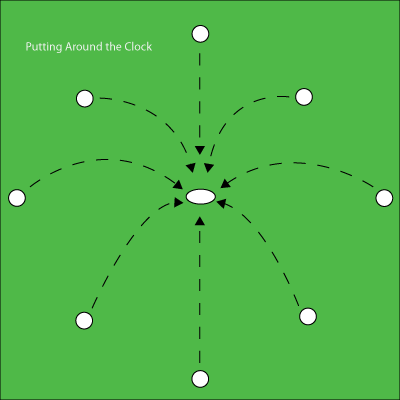Golf is a challenging sport. There are many, many body movements that make up your swing. Not correctly executing any one of these movements can have disastrous results. Watch the pros this weekend. Almost all of them will execute at least one swing incorrectly resulting in a poor shot.
One area you less seldom see a pro make a mistake in is course management. Course management is playing your way around the course by best utilizing the strengths of your game. It is rare to see a professional golfer hit a shot out of trouble that does not put them in a better position. We amateurs do it quite more often. By using better course management, high handicap golfers will be able to shave strokes off their round. These are valuable strokes on the way to shooting 90.
“Your name may be Rory, Phil or even Tiger, but you’re not them.”
I enjoy watching professional golf on TV. The pros’ level of play is both amazing and inspiring. Some of the shots they pull off to recovery from bad spots are jaw-dropping. Phil Mickelson’s second shot off the pine straw on the 13th hole of the 2010 Masters final round was incredible. As was Bill Haas’ third shot on the second sudden-death playoff hole of the Tour Championship on his way to winning the 2011 FexExCup Playoffs. I only wish they came with the warning “These are professionals – Do not try this on your home course”.
I’m not blaming professionals for my ill-advised shots. Sometimes we trick ourselves into believing we can pull off shots we do not possess the skills for. We try to pull off the improbable shot and leave ourselves in the same or worse situation.
High handicap golfers need to build the discipline to take an unplayable lie and salvage the hole the best we can. You should not attempt a shot unless you are 80% confident you can pull it off. By failing to pull off the improbable shot, we put ourselves in position to have a blowup hole. It is difficult to recover your round after a triple bogey or worst.
“Make Going for Par 5’s in Two a Rare Occurrence.”
I’m not saying never go for a par 5 in two. Sometimes you boom the perfect drive and have the perfect lie in the fairway on a par 5 with an accessible green. The problem is that the majority of the time, the risk of going for it in two is greater than the reward. The best you can expect when missing the green is a short yardage chip off the fairway. You have an equal chance of being in a bunker, green-side rough or worse yet a hazard.
You are better off to layup to a yardage that you are comfortable with. My comfortable yardage for a third shot on a par 5 is 100 yards. Yours may be different. 100 yards leaves me with a full wedge to the pin. This shot actually gives me a better chance of a realistic birdie putt than a shot from a green-side bunker or rough does.
“Play the Shot You Brought to the Course.”
We all have a ball flight that is natural to the skill level we are at and where our game currently stands. It may be a slight draw, fade or even relatively straight. When warming up on the range or on the first hole or two, you may find your ball flight path is noticeably different. Our natural urge is to fix it but neither the warmup period or the course is the correct time or place. Our swing and ball flight path are defined by practicing and committing our muscles to memory. Making changes on the course will only fill our head with swing thoughts leading to bad shots and high scores.
What usually happens to me when trying to change my swing on the course is my first correction isn’t enough. I end up over-correcting on my next shot which usually has major consequences.
The next time you find yourself with a slightly different ball path out on the course, manage your game around it instead of trying to change it. Leave the work on your swing to your practice time on the range.
We need to manage our way around the course differently than the pros. There are shots we cannot make, par 5’s we cannot easily reach in two, and swing corrections we cannot make on the course. Match your course management to your game and shave strokes off your score.




